
Record collectors are familiar with the thrill of finding a rarity – music that was said to be lost to the sands of time or maybe even previously unknown to exist. Images of the artists we love can be the same way. A backstage photo of The Sonics performing for a sold-out crowd. Karen Dalton lighting a cigarette backstage. Blues enigma Hayes McMullan sharing an intimate moment with his wife Hattie while he plays guitar on his porch. They illuminate the stories we already know and maybe even give new angles to old myths.
This Saturday, Dec. 8, KEXP will host a new gallery “Light In The Attic Records: A Visual Archive,” spotlighting artists from the label’s vast and historically significant archival catalog. LITA enlisted the talents of renowned photographer David Black to curate the showcase. Black has worked with an astounding array of modern artists from Daft Punk and Kendrick Lamar to Cat Power and Pharrell. The gallery features two of Black’s own images alongside unearthed images from predecessors, including images of D’Angelo, Townes Van Zandt, The Shaggs, Betty Davis, Sly Stone, Karen Dalton, Mark Lanegan, and more.
“In many times being a photographer, it turns out that the in-between moments are quite often the most interesting,” Black says in a phone call ahead of the exhibition opening. “Because your subject lets their guard down.”
That notion is at the core of this gallery, displaying an array of stunning images. Some are familiar, some are brand new. Ahead of the opening reception, Black talks with KEXP about his own experiences in photography and his curatorial approach, including some deeper insights into some of the photos you’ll see on display in the Gathering Space.
David Black: How this all started is, I've always worked with musicians and I feel like maybe in another lifetime I was a failed musician that just ended up as a photographer working with a lot of musicians. I came to Light in the Attic around the time they put the Donnie and Joe Emerson release out. I forget what year that was like 2013 or 12, something like that. And Matt had come up to me, Matt Sullivan who runs the label, wondered if I wanted to go out there and shoot Donnie and Joe and take a peek at their barn studio, which pretty much was preserved as is when they recorded that record when they were in high school. So that kind of started a relationship with Light in the Attic of going out there, digging into these music histories, capturing like a visual angle. Some of this stuff is original, which is amazing, but you know most of this stuff is going through archives and selecting from there.
KEXP: You mentioned that you’ve always worked with artists and maybe in a past life you'd be a musician. What brought you to photography? Do you remember the first time you expressed an interest in wanting to use a camera?
Absolutely. My grandmother was a musician and she was a really eccentric wild woman. It was a lot of fun. I kind of grew up with her. So I was always around eccentric people and because of that I just gravitated towards cameras, and then when I first started getting into a dark room and doing that, the most natural subjects to me were musicians because they're just the most interesting people, generally pretty eccentric and wild and live unconventional lives, so that lends itself well to being visually captured.
Do you remember the first artist you shot or what that experience was like?
Absolutely. I'm trying to think back to what a really early one would have been that would be interesting. Around an earlier one that was pretty cool was when I was really young I was sent to go photograph Richard Hell in his apartment in New York which was pretty much a time capsule from the 70s and 80s. I think it was pretty the same apartment he's lived in since Blank Generation. So walking into that and seeing that and having that rapport when you do a lot of these shoots where you're really just one on one with an artist, there's no one else there, and it's a very intimate connection with somebody in their personal space, those are the experiences that I just find incredibly interesting. That level of intimacy and capturing what a musician's life is like.
In your work, there is that intimacy and an emotional connection. How do you foster that type of environment? How do you make people comfortable so they can reveal themselves in that way to the camera?
Sure. I mean I think it's about just creating the most intimate experience possible. I mean everybody has different ideas of photo shoots from watching movies like Blow-Up or things like that with lots of people around, or different rooms or a lot of production. But I think in terms of dealing with musicians or dealing with artists in general, having an intimate experience, having time and then being able to spend time with that person and going to somewhere or do something with that person that's incredibly personal. For Light in the Attic that's incredible, for Donnie and Joe Emerson it was going to the barn in their parents’ house they grew up on in their barn recording studio, and then for Sly Stone it was going and him showing me his collection of hot rods and old motorcycles that he kept in this garage and going on a bit of a walk and a journey with him. But yeah it spans across that but it's really a level of intimacy with the subject you're working with.
The spectrum of artists that you've worked with is so broad; Daft Punk, Kim Gordon, Cat Power, Vince Staples, the list goes on and on. You always do a great job of capturing their uniqueness, but there's also still your distinct David Black style. How do you balance your personal style with that of the subjects? Do you feel like you have a signature to your approach?
For me, I think making sure it's my style has a lot to do with the lighting and the photographic touch of that combined with the physical relaxation and intimacy with the subjects. I'm always really inspired by lighting in movies ever since I was a kid and cinema so making sure that that light has an awe quality to it that is cinematic. But then you also don't want the subjects to be completely statuesque where they're just standing in place in beautiful light doing nothing. I feel like that's always the tightrope walk of making a beautiful photograph and at the same time, making the subject look and feel like the camera is not there and that they're completely comfortable. And as I'm sure you know or anybody that might read or listen to this, trying to make some musicians comfortable is not always the easiest task or any artists in general. Some are really good at it. Some are like really relaxed and others are not. That's part of the job and the journey.
Do you discuss creative direction at all with people you're shooting?
Yeah, it depends on the project, for sure. I think any time you do a shoot or you do any kind of art project across the board, there's always going to be a fair amount of pre-production and planning and what you think you should do before you get on to it. But quite often you walk through the door and all that goes out the window and you're relying on instincts and doing, there's probably a better way to say this, but doing what feels right and what feels good in the room and the experience and being able to read the room and feel it. And I feel like that instinct has a lot to do with being a photographer, being able to walk in and follow threads and see what works and what isn't working.
You kind of mentioned already about how you first got with Light in the Attic and the Donnie and Joe Emerson shoot, were you familiar with the label and what they were doing before that?
I was. I collected their records for a while. I got turned on to them probably around the time the Rodriguez movie came out. And then a good friend of mine Jess Rotter, who's an amazing illustrator, was working there and she introduced me to them, and that's how the connection happened.
Sounds like it's been a great relationship. How did they approach you about curating this gallery?
Well, it kind of started with – are you familiar with the Heartworn Highways box set that they did? It was a movie in the 70s about outlaw country with like Townes Van Zandt and Guy Clark and all that. They released the soundtrack in a box set, which is incredible, but while they were going to release it, the director had passed away, but the editor was keeping all the materials that were accompanying the film and he sent all the original materials to the Light in the Attic office. I happened to be there when they arrived and we cracked open the case and what it was just a wealth of contact sheets, raw negatives that this gentleman had sent in the mail, lithographs bio sheets of everybody who would have appeared in the thing. Literally just a box of any original material pertaining to the movie. For me, that's like Christmas morning. Because there are so many negatives and frames there, particularly when you're looking at a contact sheet which is, you know a 35-millimeter contact sheet is limited to 36 frames. So even if you're seeing BTS from a scene or all that, you're basically seeing frame by frame how things go and you're limited within that roll, so each contact sheet is going to tell a very specific story. And that idea of storytelling and narrative and finding a hidden frame that no one had ever seen, I mean light bulbs are going off left and right. So I think Matt and everybody at Light in the Attic saw that and I saw that, and that started a few years of being able to curate some projects for them visually. I'd be like, 'Okay, I know you guys are already writing this, I know you got your music down, but no one's actually going through these and finding frames and scanning this stuff and taking a peek. So that's kind of how it started and subsequently through that [we] found some amazing frames that had never seen the light of day of Townes Van Zandt, which I think one of them they used to promote the box set, which is great because it's awesome when you see a frame that everyone's seen before and that's great, but when you see something hidden like that, it's like a treasure hunt. In the same way of finding a record that no one's heard before and bringing it out into the world, it's the same thing with the [photos]. So after Heartworn Highways, we got the Betty Davis archive which was really great, and it was all the original publicity shoots that she did that Miles Davis commissioned for her for her first album. Those were amazing, great BTS shots of her and Miles hanging out, and then all the studios' shots that they were using for her publicity for right when she was first getting started. That's compelling and sells as a show.
It's amazing, even just hearing you describe opening those boxes. There's so much historical significance to a lot of this material that's just gotta take you back for a second, to be able to share these just feels so important.
I think that too. I also think we're dealing in a similar way of – it's an age thing. Because so many of these records that they're looking at are from the 60s, 70s, into 80s, now obviously into 90s as time increases. But the people that you're actually going to have one on one access with to tell these stories, to show a bit about what happened through their words, it's become increasingly limited with time just for biological reasons. So it's super important I think. If there are any surviving people associated with the project or anything like that, to talk to them and make sure that it's a big part of the history of music and mostly the history of music in this country.
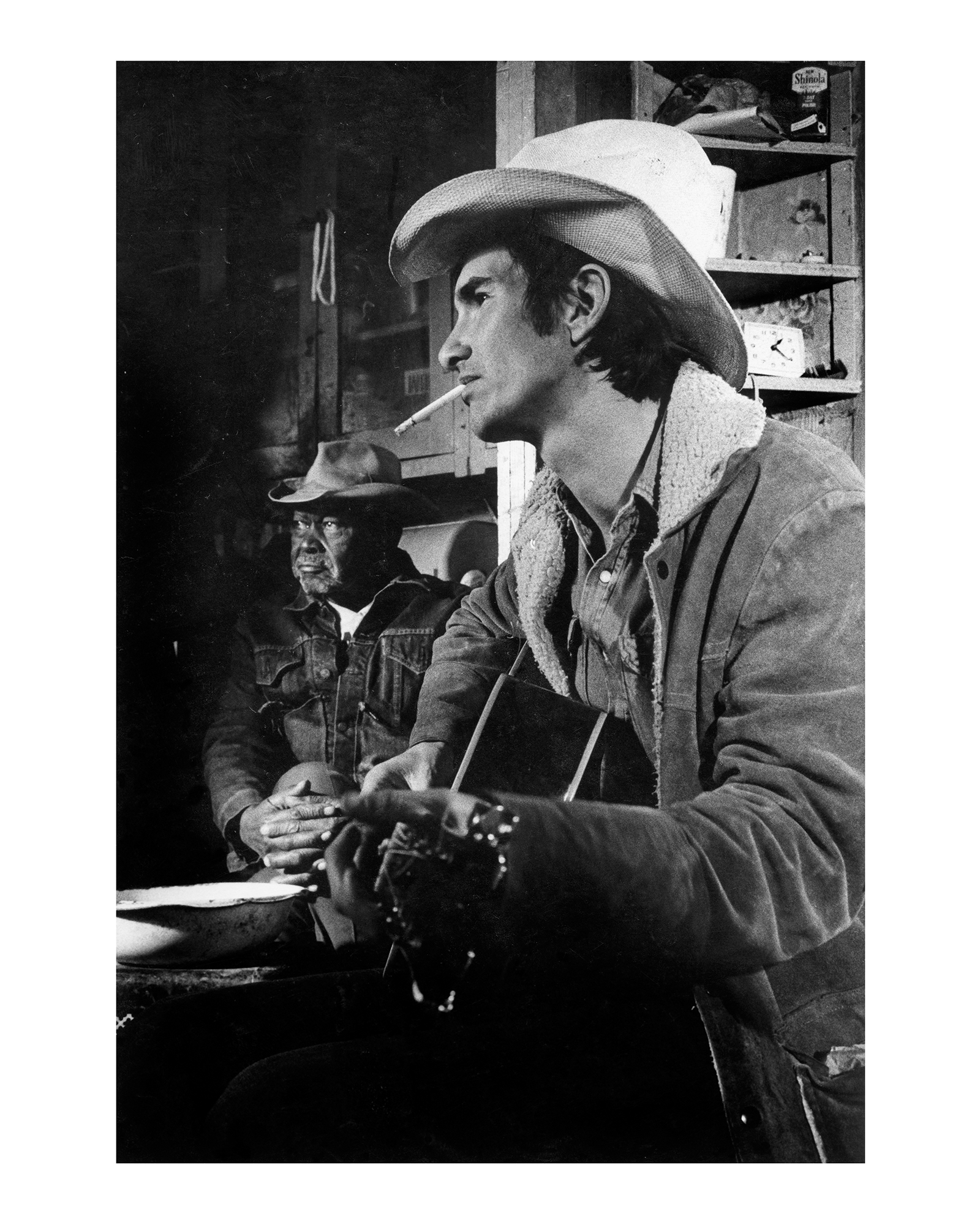
I'd imagine from a curatorial aspect, it must be tough to decide what you use in an exhibit like this? How do you have a box full of these amazing Townes Van Zandt and Heartworn Highways contact sheets and decide on one or two photos to pick from that?
I think that what interested me the least about looking through photos is looking through publicity photos. Like posed photos. Some of them are even so stiff they become humorous and maybe there is something interesting about it. There's a great one of Kenny G's first band that's in the show. It's Kenny G, it was a Seattle band he was in I forget the name of it. It's almost humorous it's there, but to be honest, for me personally, the interesting moments are probably more aspects of documentary photography than they are formal portrait sessions commissioned by a record label or something like that. Those are the ones that I think are great. Karen Dalton backstage having a cigarette with sunglasses on in the dressing room. Even Betty and Miles Davis just hanging out backstage, the looks on their face completely tells their biographies. Their relationship is just a complete tell.
That kind of stuff is so compelling to me. And I think it's hard too because some of the images people have seen obviously, but a lot of them you haven't. So the other criteria for me was try to find images no one's seen. If we found out who the photographer was for a shoot then send us what else you have. And if there's a contact sheet, let's see if we can the contact sheet, or if we have the negatives, let's scan the negatives, the prints. Because of that, we found some great images of D'Angelo's 1999 Voodoo tour in New Orleans, which I thought were just so amazing, because they look like they could have been in any period in the last forty years. It's unbelievable. One of the shots where you see him on stage and you see the whole front row the audience and the police and the security around and all that, that kind of stuff is just amazing. I think the other gem that really blew me away was Haruomi Hosono from Yellow Magic Orchestra. We recently just got all his archives and that's such expansive stuff. And I think for American audiences it's been really hard because of rights issues to get a hold of his stuff, so to show that out I'm like okay no one here has seen this, this is great. Bring those out into the world and get a visual to associate with the music, give context to it.
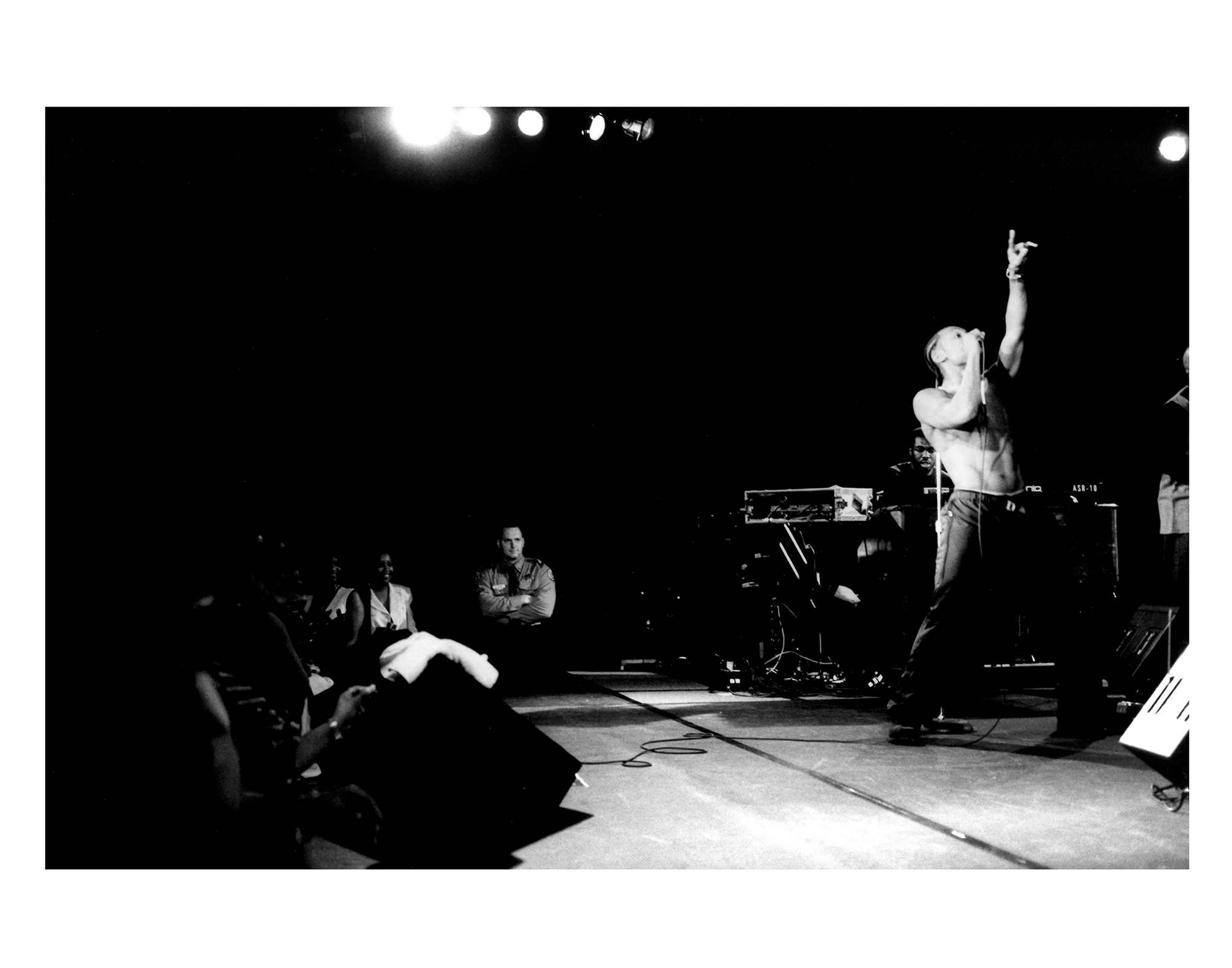
You mentioned the D'Angelo photos. I was looking at those ones and I was just thinking – there's a mythology to D'Angelo and a lot of the other artists in the gallery, where he's almost mythical and disappears for long periods of time. And then you look at these photos and immediately I feel that story. It feels like that ghostly, phantom figure. Are you thinking about how these images capture the essence of the artists? How do you try to define that for yourself?
I think a lot of times it just naturally happens like that. That D'Angelo one is a great example. The images tend to, if they aren't super, super, super posed, photos tend to have a truth to them already, because it's just documenting what that artist's presence is. In a sense that's like photography working in the best way that it can; documenting the specific moment in time and what that person does with it. I think actually they do that without even trying.
I noticed the images in the series are mostly black and white, with a few notable exceptions. Was that something you were trying to think of intentionally thematically? Or did it just kind of happen that way?
Personally I think I kind of steer more towards the black and whites because I think they would look graphically better, but to be honest, the majority of the images were black and white. I think it's more just a period thing, the era that we're looking at, which is primarily sixties through seventies, eighties. Obviously, there are some exceptions to that, but there was just a lot more black and white and also they made higher speed black and white film. So that's why you see so much music photography, which is often done in low light, in black and white than color. There are some great colors shots too, notably the native North American series, there are some amazing ones from that, but the majority of the stuff is black and white. I think some of the most striking photos are black and white, and I think of the Townes photos, the Betty photos. Even The Sonics backstage, that was really cool too. The pans from the audience to behind the drummer to see everything that's happening there.
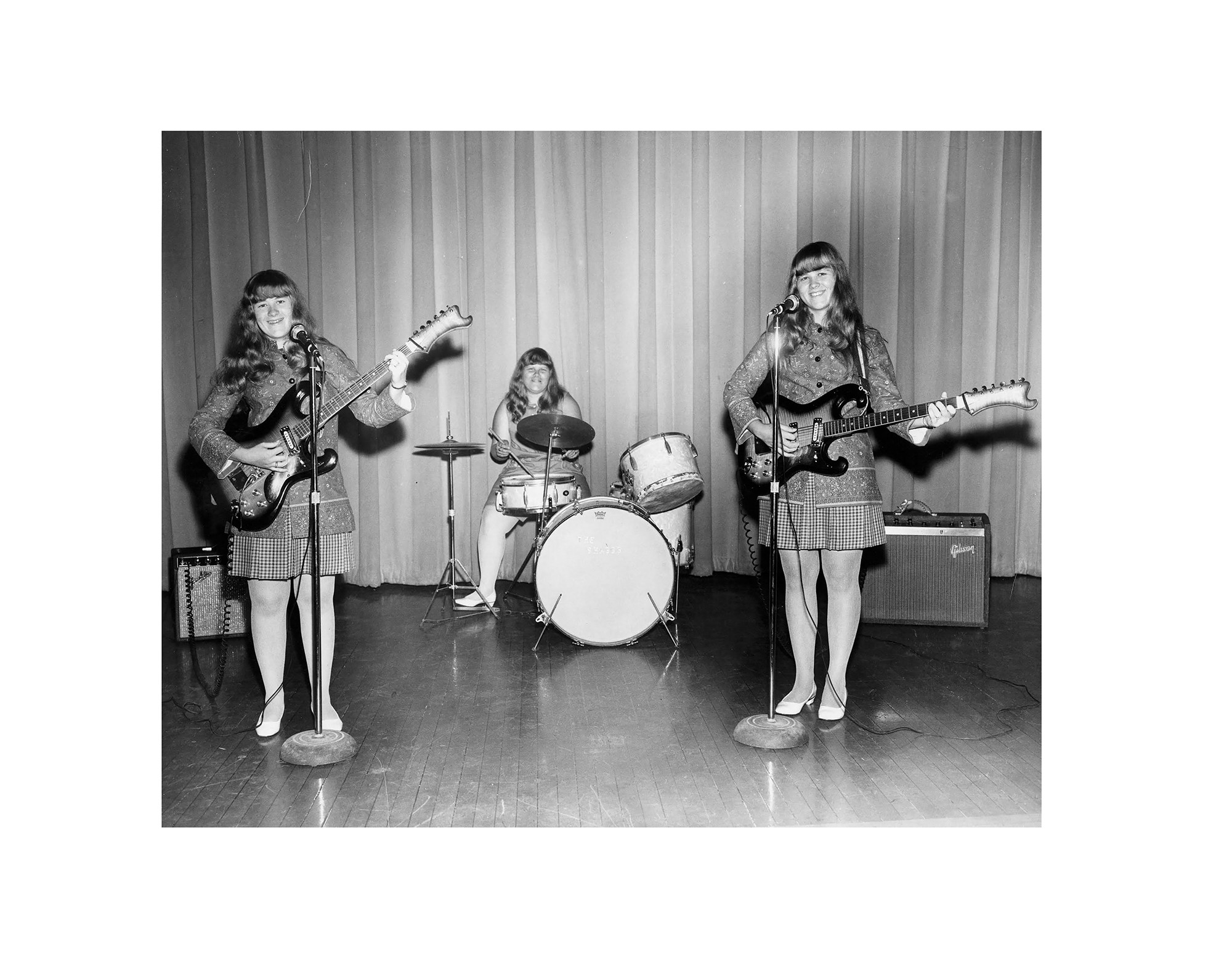
You mentioned as much as you could trying to feature images that had never been seen before. But there are some exceptions the one that stuck out to me was The Shaggs. The image I most associated with them is that photo. What do you think about this photo is so iconic? What has made that photo so timeless and ubiquitous?
I don't know, I think it's the counterpoint. [laughs] It's the contrast it's like also their expression on their face. I don't know something about them posing and supposedly should be deemed as rock stars, but they're probably the most anti-rock star punk look ever, even down to the expressions on their face are like a complete counterpoint to what you'd expect from a rock band on stage with guitars and drums. Like any good story you need a counterpoint, you need contrast, and images work the same way.
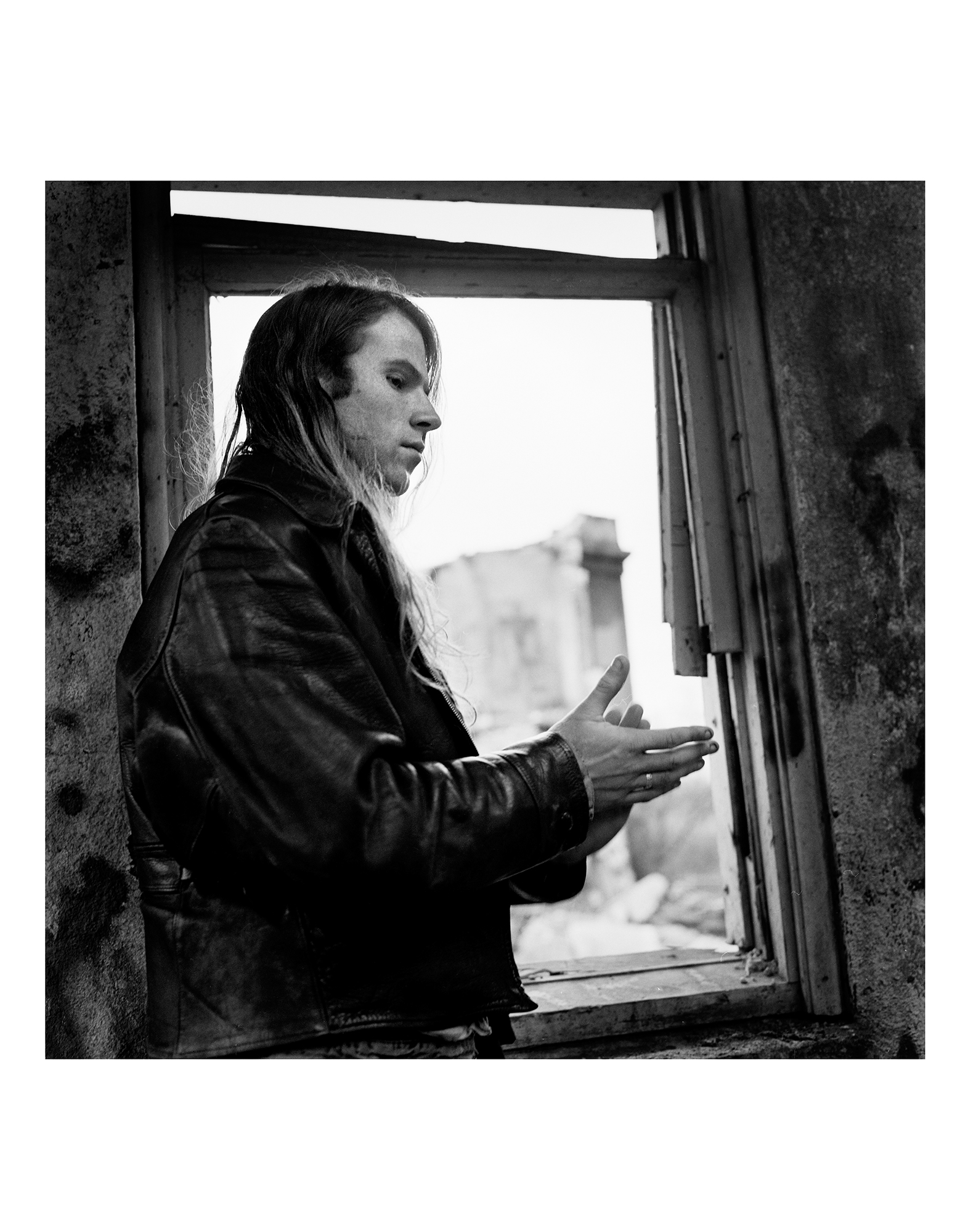
Another one that struck me was the Mark Lanegan photo. Charles Peterson has got no shortage of images of Mark Lanegan in his various projects. What about this one specifically connected to you?
Well, we looked at a handful of ones. I was really just trying to find like a moment of Mark that wasn't -- I feel like most of the photos at least that got for him were pretty pose-y, like him through a mirror, or addressing the camera directly, or very aware that a photo was being taken. And I think out of the ones we had to select from, that one appealed to me because of the off moment of it, that it didn't seem like he was – there's obviously somebody in the room taking a photo, but he didn't seem as prepared or ready. And in many times being a photographer, it turns out that the in-between moments are quite often the most interesting because your subject lets their guard down. And I feel like a lot of the photos of Mark I was looking at, the guard just felt up. It felt like he was aware the camera was there, there was a persona that was being put on, and that persona was delivered to the photographer. And I think that image to me felt more interesting and more dynamic because it felt like the persona was caught off guard.
I think that's totally spot on. Yeah and keeping it with Seattle, too, I love those Sonics photos. I think those are some of the cleanest images I've seen of them performing live.
Yeah, I know. I've not seen a better photo of them performing live either. It really blew me away. And I like the idea of a diptych where you're having a panorama where you're seeing the audience, but it's also like you're seeing behind the wizard's whatever they – the curtains behind the Wizard of Oz and you can see backstage. That was so rad. The left you see this audience that is going wild and there's an incredible energy and momentum in the room, but then you pan to the right and you see right behind the drummer and you get that whole picture. To me, that's kind of what, I guess a lot of what we're talking about, it's like not just what the record company wants you to see, not just what is the photo that displays the persona of the artist that wants to be presented, but like what else is going on there? I think that diptych is a really good example to see behind the drummer and see the audience, and it somehow makes it glamorous and less glamorous at the same time. I don't know. I think it's cool.
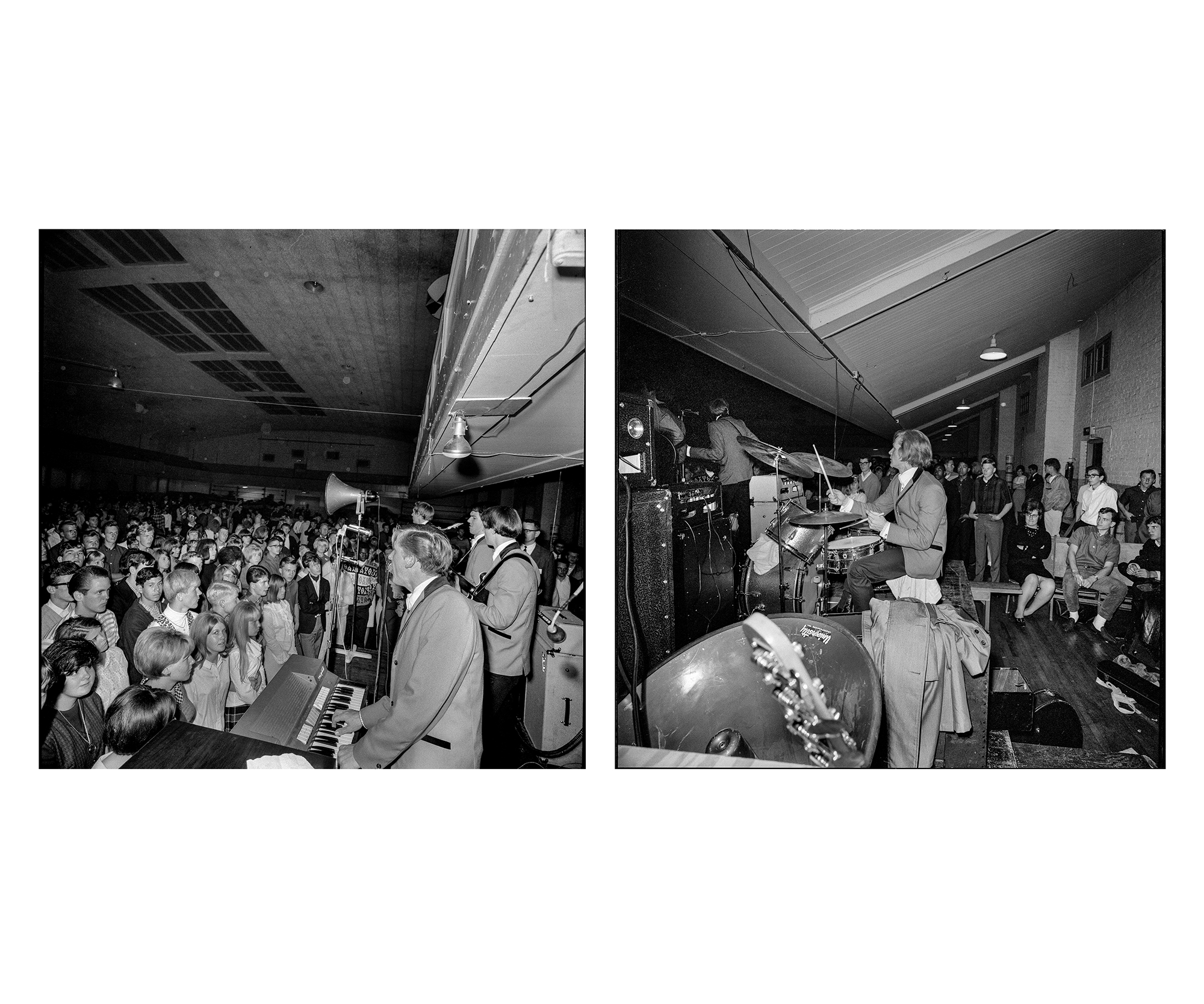
No, I think that's really great. And you know, that kind of speaks to another thing that I feel on this collection, and this photo in particular. A lot of these artists might be considered cult artists or not mainstream to certain broader audiences, but I think these pictures – especially this one – shows that these aren't just some bands that are obscure and that no one knew about. It paints a picture of where these bands were coming from and how they meant something to a lot of people.
I think that's what's so interesting about Light in the Attic is bringing in bands, musicians, records that people don't know about, or so on the cusp. Or it's a B-side of somebody that maybe somebody does know about it. Like with Sly, and then releasing the “Spirit” record or things like that where we know who this is but there's a whole chapter of this person's career and life that was ignored for one reason or another. And let's bring that back to light and look at it and get a better picture of who this artist is and why this person was making the music they were. I think that's really cool.
You mentioned the Townes Van Zandt images earlier. I was going back and watching some clips from Heartworn Highways. I was curious if you knew; one of the photos looked like it was taken during the same scene that he performed 'Waiting Around To Die'. He was wearing the same jacket, so I was curious about that.
Oh really. Man, I don't know. Yeah, maybe you're right. At least on the contact sheet – I'll have to go back and check that out to see. That's a good point if you caught that. But on the contract sheet is basically a BTS of them playing together. So I'm assuming if they're wearing a different jacket they might have done a few takes of it, where the gentleman cries in the background during that performance. But the set up on the contact sheet as I remember it was very similar. And then you actually see BTS the sound guy, the film crew, and then that one shot of Townes kind of leaning over, not the cue shot of him and the gentleman who cries, but the single shot of him, like kind of head down in the shadows of the cowboy hat; that was on that same contact sheet, so that was really cool.
Those are some of my favorites in the collection. It captures the whole essence of him. How did you come to pick these out of that entire box?
I'm from Texas originally so I feel like I have an affinity for Townes Van Zandt, so it was easy for me to be gravitated in that direction. And also he's a really compelling character but he's also… out of a lot of the people that were in there – not to speak less of any of the other artists that were in the movie – but that seemed to me, particularly when he sings 'Waiting Around to Die', that haunted me. And I'm pretty sure it haunted just about everybody who saw that scene afterward. It Is a very, very, very powerful scene. Knowing the context of his life, what he's going through, why he's singing that song, and then also how it affected the other people in the room. It was just one of those cinematic moments that became so deeply ingrained in my mind that looking through it, I couldn't help but gravitate towards that.
It's cool to see that image like having seen that scene and finding that alternate view of it, it's like what we talked about with The Sonics, you see a different perspective of the artist even if it's a somewhat familiar image. When you were putting this together, were you thinking about the range of artists? Did you have an outline of artists you needed to hit? How did you see all these different artists and styles of music coming together?
I mean it's tricky because you want to show the history of the label and the expanse of the label, and the label obviously is doing everything from new age albums to punk. It's all across the board. So I think thematically I think the things I try to look for to try to tie it together, were moments that were in-between moments, unexpected moments. Hopefully photographs that people have never seen before that speak to the essence of the artist. And then there's obviously practical concerns too. We had a ton of photos but how many can we fit on the wall at KEXP? There's always practical concerns of any project. And so this one is how much we can afford to print, how much wall space there is, how big the files are that we're receiving, how big can we go with the photos. For me as a photographer that's a big thing. Naturally, I want to go as large as possible because we're living in a culture where we're looking at imagery on our phone, which is mostly like a two-inch area, which is very tiny and you lose a lot of details. Some images can work really good small and then images that have more nuance don't work so good small. So you want to really get lost in it and see it. We couldn't blow up every image as we wanted because getting a hold of some of these files and negatives and all that, and there was damage done to the negatives. So some can be bigger than others. That's another practical concern.
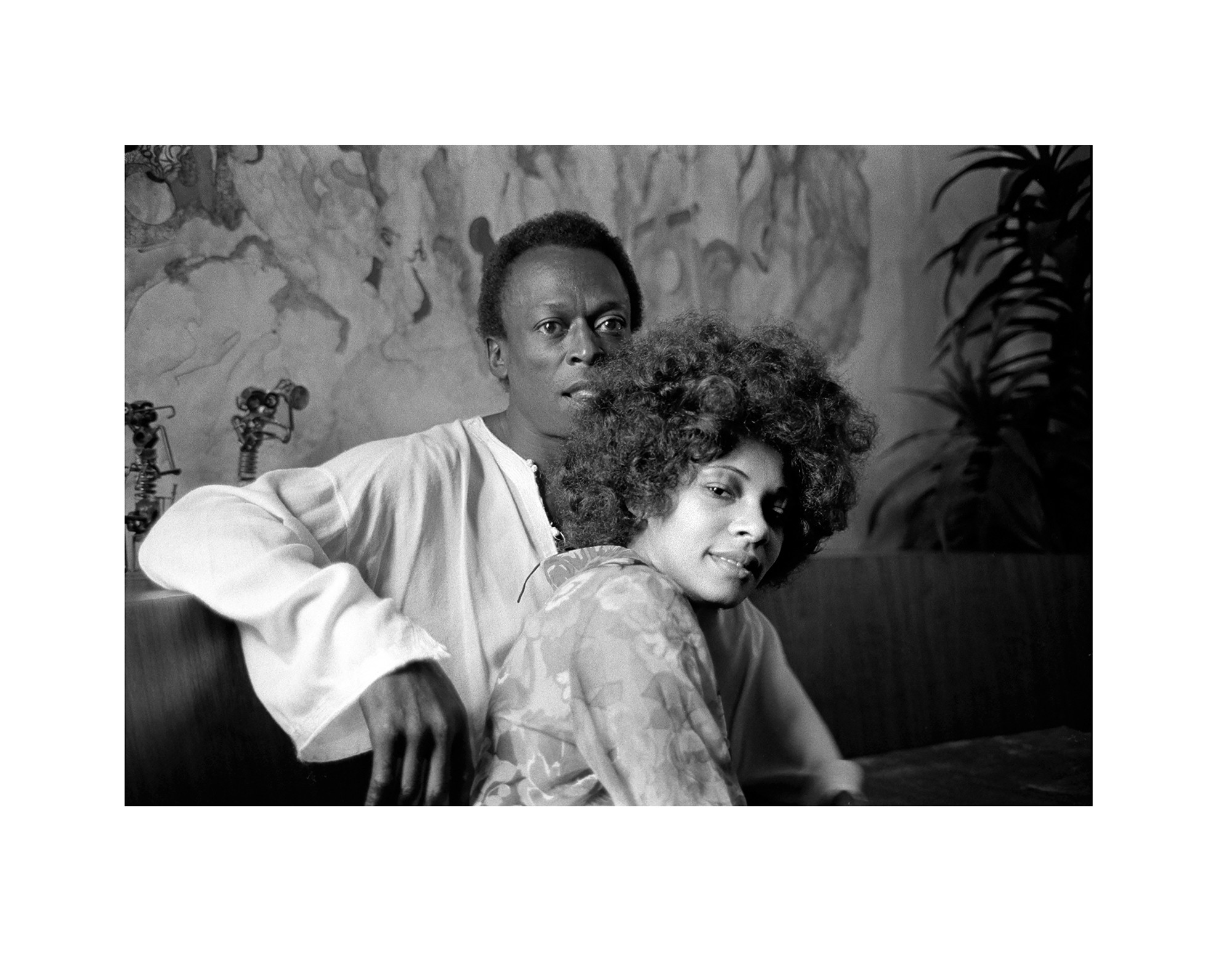
The Betty Davis photos of phenomenal, especially the one of her and Miles Davis. Again, I'm repeating the same type of question but what reason to that one in particular?
This is a good little anecdote. But how that project started is Matt Sullivan asked if I wanted to come over for a beer. And I did. And he's like “I got to play you these tapes.” And there were tapes that he just got a hold of that were the original demo recordings that Miles Davis produced for Betty Davis. So he's talking with her through the mic the whole time as she's doing each take and then she's singing a take and then he's talking back to her and it's just like completely unreal. He wouldn't have made Bitches Brew if it wasn't for Betty Davis, because she turned him on to the counterculture and turned him on to so many things that were happening that were her generation, not his generation. So there was an interesting thing about that. It was also obviously a very volatile relationship that didn't last very long. So I think what drew me to that in terms of the relationship between two creative people that are obviously very strong, but coming from generationally two different places trying to meet, but obviously missing the mark… You see Miles Davis, which is Miles Davis in many photos. There is like a stream and this kind of intense posturing, almost like in every photo you have from that one to the Jim Marshall photos and then you see Betty, and she looks like she's almost trying to put on a face for the photo. And, in a way, it looks like they're both trying to put on a face for the photo. And I think that's why it was so cool, just knowing a bit about them.
What are you hoping people who come in and walk through the gathering space and this gallery, what do you hope they take away from this exhibit?
I'm just stoked it's in a place that everybody who is at KEXP is going to come through and obviously knowing that a lot of people are just going to randomly be walking through the space to the KEXP related events or Light in the Attic that just people that wouldn't normally get turned on this stuff will. The way we have it set up too is that we're going to have a little bio sheet with all with all the photos up, so people can grab a bio sheet and as they walk through the exhibit, they can read a bit about each artist and then as they're doing that, I would suggest that they just dial in each artist and listen to some songs and get lost in the world and see if there's something that resonates with you. And if it does, then follow that and see it. There's also something great about it with a photo like that you know make so many of these artists more human. You're gonna basically hear their music, but then also see a side of them that will feel very attainable and human. I think that's really important because maybe a kid sees that and is inspired to go be a musician himself or herself and that's cool.
All week long in advance of KEXP’s third annual Record Fair this Saturday, Sept. 8, Afternoon Show host DJ Kevin Cole gives us a look inside his record collection at some of his rarest and most loved records.
Since 2002, Seattle's Light in the Attic Records have been reissuing unknown, under-appreciated, and utterly fantastic music. KEXP chats with founder Matt Sullivan about the label's releases, past and present.